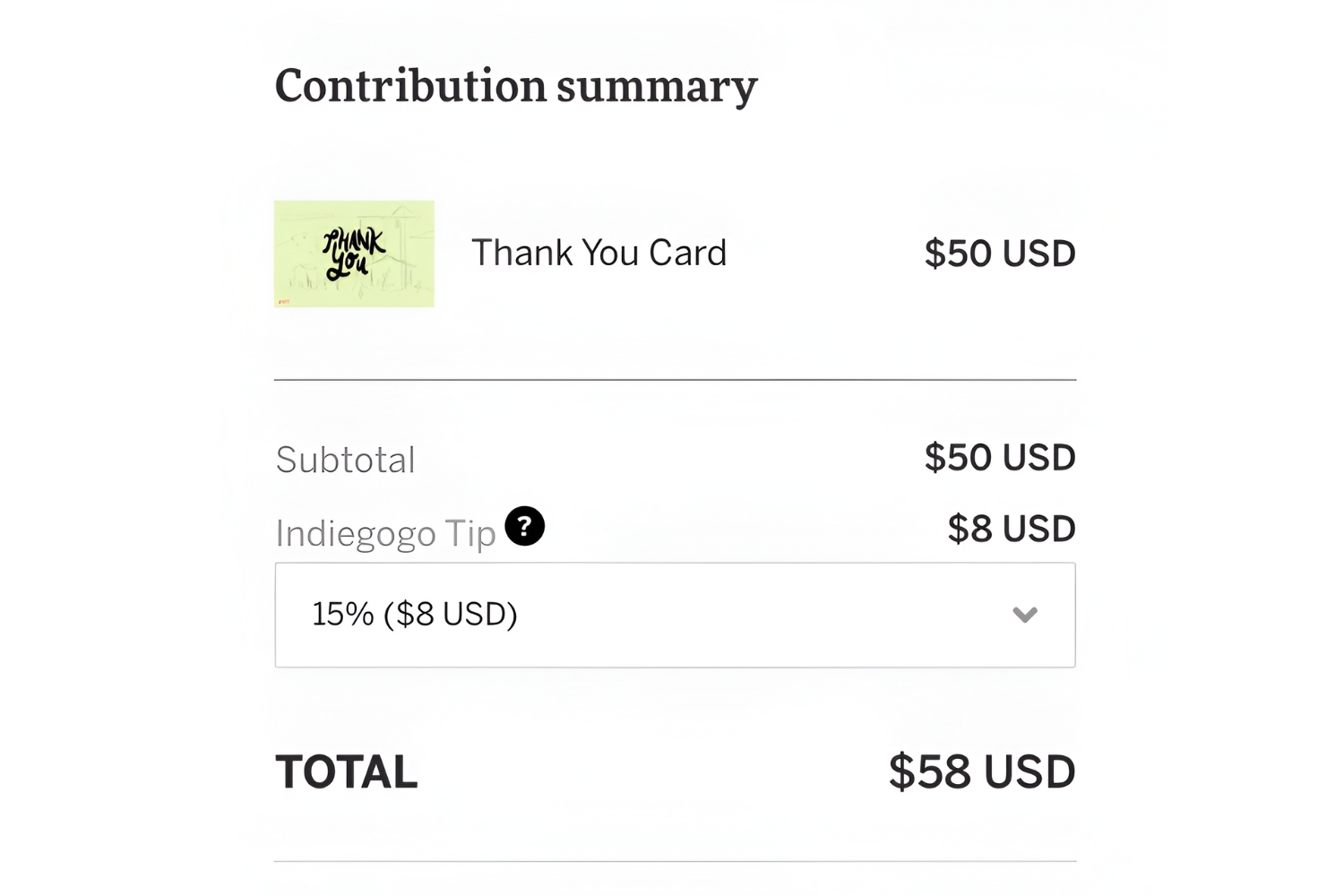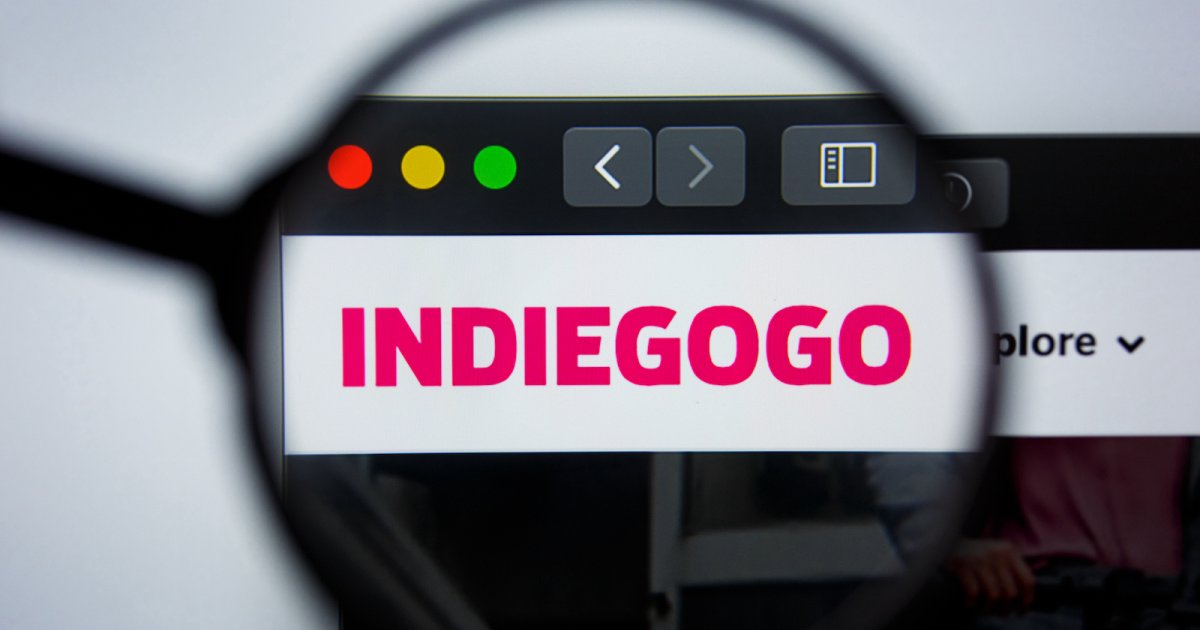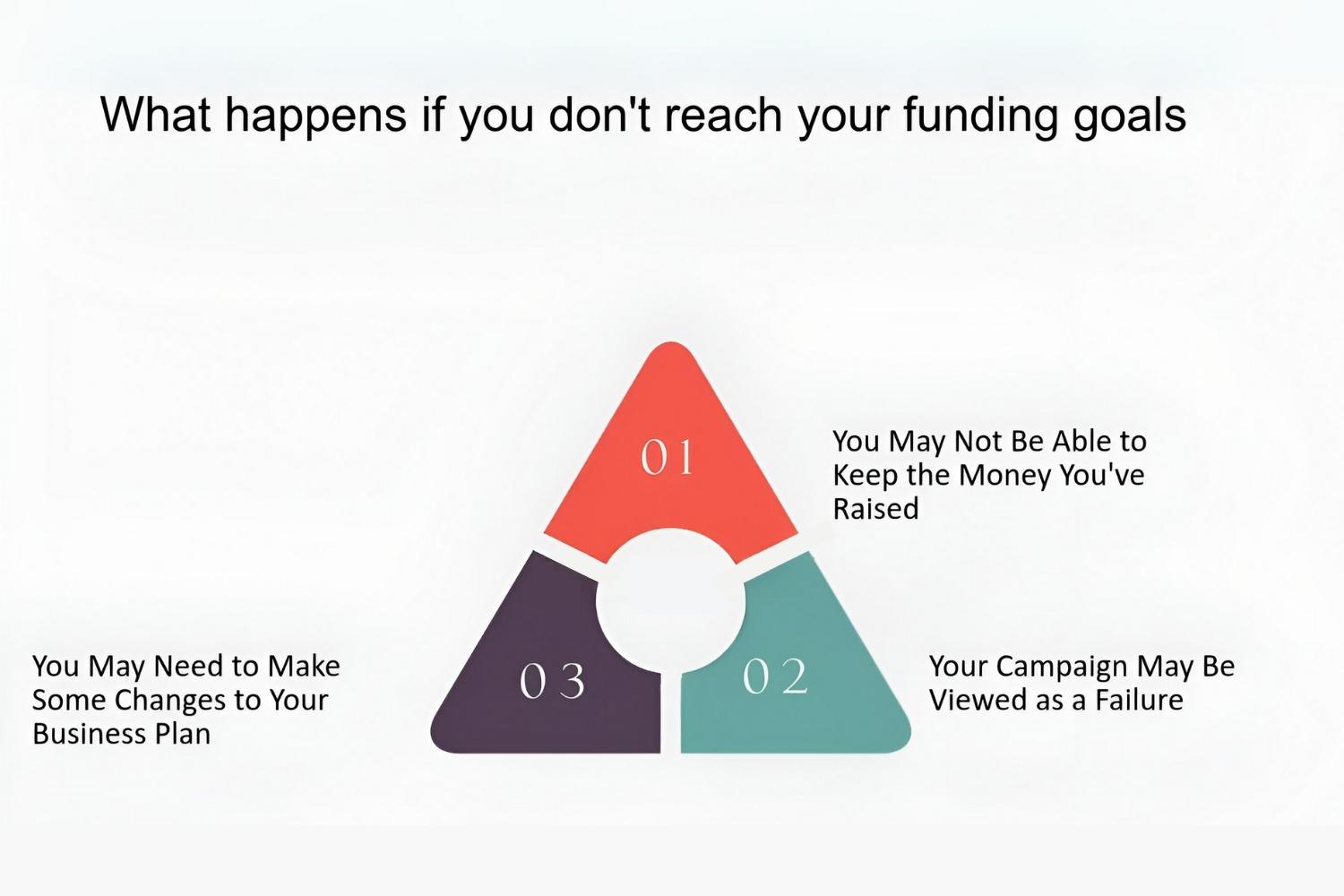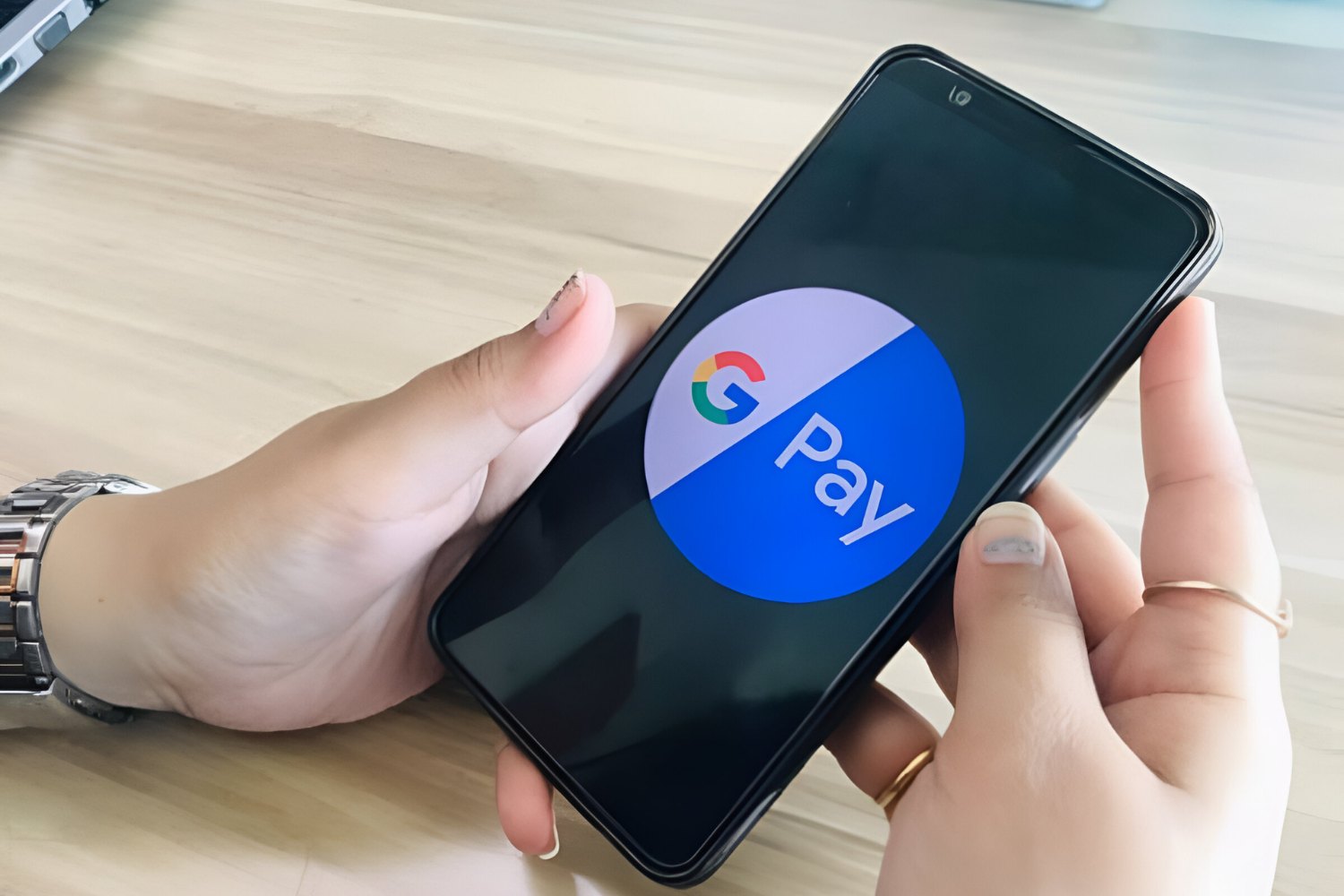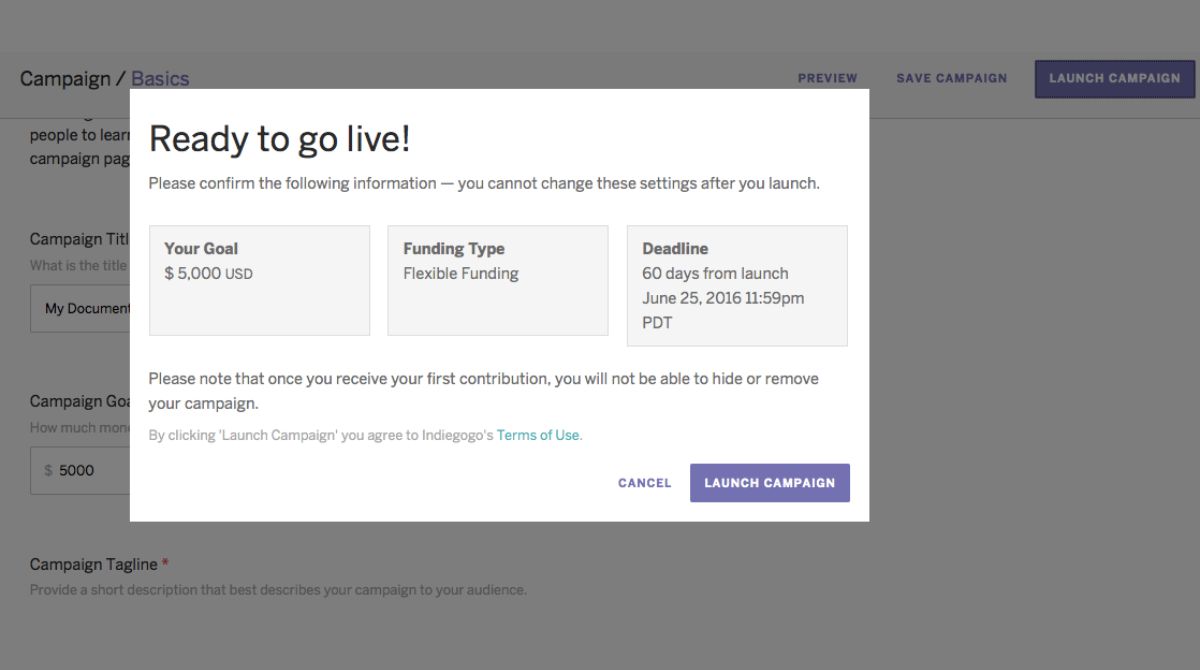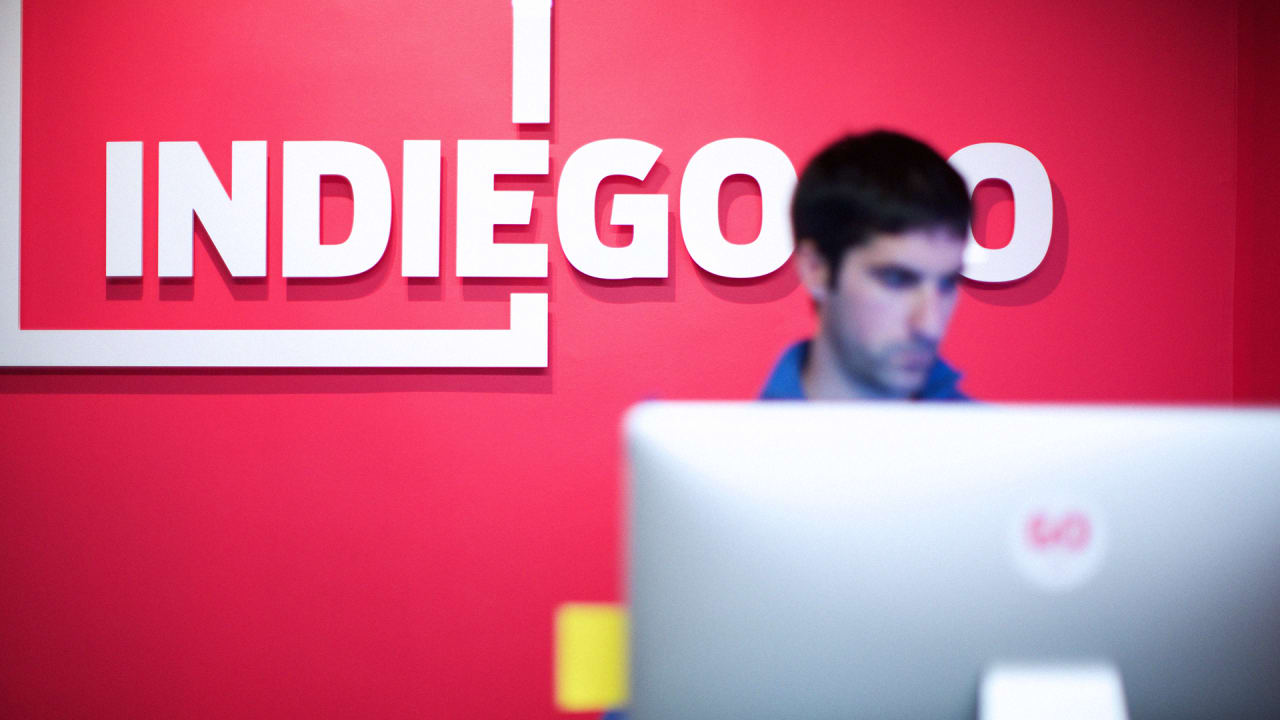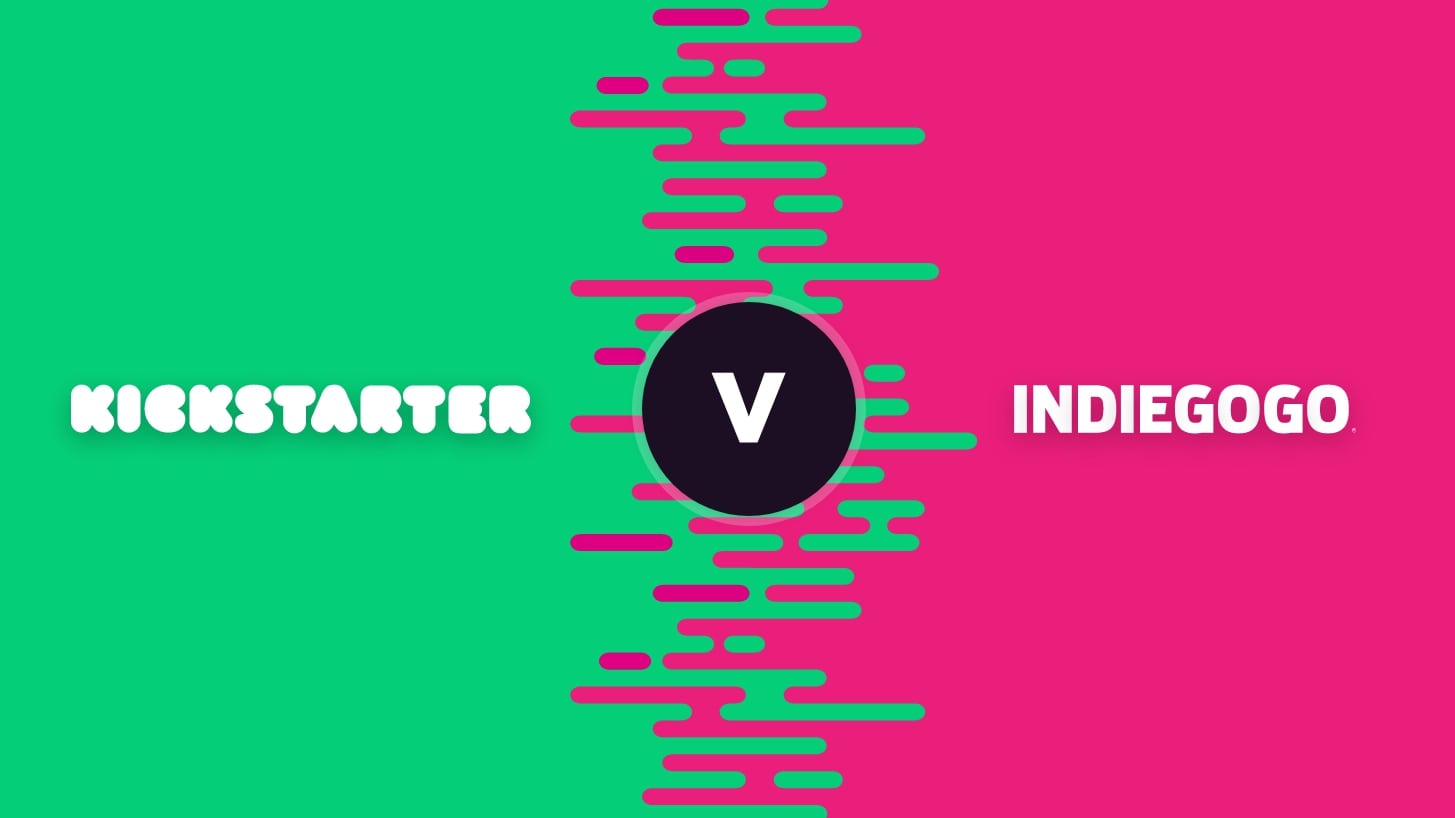Introduction
Welcome to the exciting world of crowdfunding! If you’re familiar with the concept, you’ve probably heard of Indiegogo—a popular online platform that helps entrepreneurs, artists, and dreamers bring their projects to life through the support of backers like you. But what happens if the project you’ve invested in doesn’t reach its funding goal? In this article, we will explore the implications of a failed Indiegogo project and highlight what you need to know as a backer.
Indiegogo, launched in 2008, has become a leading name in the crowdfunding industry. It offers a platform for creators to showcase their ideas and seek financial support from a global community. Backers, in turn, have the opportunity to contribute to innovative projects and receive rewards or early access in return. While the majority of Indiegogo campaigns are successful in reaching their funding targets, there are instances where projects fall short.
When a project fails on Indiegogo, it generally means that it did not reach its desired funding goal by the campaign’s end date. This can happen due to various reasons, such as insufficient marketing efforts, limited exposure, or a lack of interest from potential backers. While it can be disappointing for both the creators and backers, understanding the implications of a failed project is crucial.
As a backer, one of the primary concerns you may have is the financial impact of a failed project. Unlike platforms like Kickstarter, Indiegogo offers both flexible and fixed funding options. With flexible funding, even if the campaign falls short of the goal, the project creator can still access the funds raised and may proceed with the project, albeit with potentially scaled-down plans. On the other hand, with fixed funding, if the project doesn’t reach the target amount, the backers are not charged, and the project does not proceed.
The financial implications for backers in a failed Indiegogo project depend on the funding type chosen by the project creator. If you backed a project with flexible funding, your contribution is typically non-refundable. This is because the creator can still use the funds raised to attempt to fulfill their project goals. However, it’s essential to note that the promised rewards or perks may be delayed, altered, or even canceled altogether. In some cases, backers may choose to support or transition to a relaunched campaign by the same creator, but this is not guaranteed.
For projects that follow the fixed funding model, where the campaign did not reach its goal, you won’t be charged, and no funds will be withdrawn from your account. This ensures that you’re not financially responsible for a project that may not come to fruition.
It’s important to remember that communication is key when a project fails. Good project creators will keep their backers informed about the situation and provide updates regarding the next steps. They may offer options such as refund requests or alternative solutions for fulfilling the project’s goals. Open and transparent communication from the project creators not only helps manage expectations but also maintains trust and fosters a sense of community between backers and creators.
Understanding Indiegogo
Before diving deeper into the implications of a failed Indiegogo project, it’s important to have a clear understanding of how the platform operates and what sets it apart from other crowdfunding platforms.
Indiegogo provides a space for creators to showcase their projects and raise funds from a global community of backers. Unlike traditional financing models, Indiegogo offers a more democratic approach to funding, allowing individuals from all walks of life to support projects they find captivating or innovative.
One of the key features that sets Indiegogo apart is its flexible funding option. With this model, creators can access the funds raised even if they fall short of their funding goal. This means that projects have the opportunity to proceed, albeit with adjusted plans, even if they don’t reach the full target. Flexible funding provides creators with more flexibility and mitigates the risk of not receiving any funds at all.
Indiegogo also offers fixed funding, which works on the principle that the project must reach its funding goal for the campaign to be successful. With fixed funding, if the set goal is not met, backers are not charged, and the project does not move forward. This model provides an additional layer of security for backers, ensuring that their funds are only used for projects that have met their funding objectives.
Additionally, Indiegogo allows both individuals and businesses to create campaigns, opening up opportunities for a diverse range of projects. Whether it’s a creative endeavor like a film or music album, or a product innovation seeking to disrupt the market, Indiegogo welcomes a wide array of campaigns.
Another advantage of Indiegogo is its global reach. Creators from different countries can launch campaigns and attract support from backers worldwide. This global aspect creates a vibrant and diverse community, bringing together people with different interests, backgrounds, and perspectives.
Indiegogo also offers various support options for creators, including both self-managed campaigns and programs where Indiegogo’s team provides guidance and assistance. This allows creators to tailor their campaign strategy to their specific needs and leverage the expertise and resources available on the platform.
Overall, Indiegogo provides a dynamic and inclusive platform for creators and backers to come together and support innovative projects. With flexible and fixed funding options, a wide range of campaign categories, a global reach, and support services, Indiegogo continues to play a significant role in the crowdfunding ecosystem.
What It Means When a Project Fails
A failed Indiegogo project can have various implications for both creators and backers. Understanding what it means when a project fails is essential to manage expectations and make informed decisions as a backer.
The primary implication of a failed project is that the campaign did not reach its funding goal within the specified timeframe. This can be disappointing for the creators who had invested time and effort into developing their project idea. It may also result in delays or even cancellation of the project, depending on the circumstances and the creator’s next steps.
For backers, a failed project means that their contribution may not result in the project coming to fruition as initially envisioned. The promised rewards or perks may be delayed, altered, or even canceled altogether. This can leave backers feeling let down or frustrated, especially if they had high hopes for the project.
In some cases, creators may choose to relaunch the campaign or explore alternative avenues to fund their project. They may revise their goals, seek additional funding sources, or make adjustments to the project scope. However, it’s important to note that relaunching a project is not guaranteed, and backers may need to decide whether they wish to continue supporting the creator’s efforts.
While a failed project can be disheartening, it’s important to remember that crowdfunding inherently carries risks. Not all projects will succeed, and setbacks are a part of the process. Innovation requires experimentation, and sometimes even the most promising ideas may not gain enough traction to reach their funding goals.
However, in some cases, a failed project can also be a valuable learning experience for both creators and backers. It provides insights into the market demand, potential challenges, and necessary improvements. Creators can use the feedback and data gathered from the failed campaign to refine their approach, adjust their strategy, and come back stronger with a relaunched campaign or a new project altogether.
As a backer, it’s essential to be aware of the risks associated with crowdfunding and approach each project with a realistic mindset. While it’s exciting to support innovative ideas and contribute to the success of a project, understanding that there’s always a possibility of failure can help manage expectations and minimize disappointment.
Ultimately, a failed Indiegogo project signifies that the campaign did not meet its funding goal, which can have implications for both creators and backers. However, it’s important to remember that failure is not always the end of the road. It can be an opportunity for creators to learn and grow, and for backers to explore other projects that align with their interests and aspirations.
Financial Implications for Backers
When a project fails on Indiegogo, backers may have concerns about the financial implications of their contribution. The exact outcomes and options available depend on the funding type chosen by the project creator and the specific circumstances of the failed project.
For backers of projects with flexible funding, the financial implications can be different compared to projects with fixed funding. In flexible funding campaigns, even if a project falls short of its funding goal, the project creator can still access the funds raised. This means that backers’ contributions are typically non-refundable, as the project creator can use the funds to attempt to fulfill their project goals, albeit, potentially with scaled-down plans. However, it’s important to note that the promised rewards or perks may be subject to delays, alterations, or even cancellation. As a backer, it’s crucial to review the project’s communication and updates regarding any changes to the plan.
On the other hand, for projects that follow the fixed funding model, where the campaign did not reach its goal, backers are not charged, and no funds are withdrawn from their accounts. This ensures that backers are not financially responsible for a project that may not come to fruition. The advantage of fixed funding is that it provides an extra layer of security, as the project must reach its funding goal for it to be considered successful.
If a project fails, backers should keep an eye out for communication from the project creator. Good project creators will keep their backers informed about the situation and provide updates regarding the next steps. They may offer options such as refund requests or alternative solutions for fulfilling the project’s goals. It’s also essential for backers to stay engaged with the project’s updates, as the creator may decide to relaunch the campaign with revised plans or seek alternative funding sources.
While refunds are not guaranteed, some project creators may offer them as a goodwill gesture. However, it’s important to understand that refunds depend on the financial situation of the project creator and the availability of funds. In some cases, creators may not be able to provide full refunds due to expenses incurred during the campaign or other financial constraints. Backers should approach refund requests with realistic expectations and consider the circumstances of the project creator.
It’s crucial for backers to familiarize themselves with the terms and conditions of the specific project they are backing, as well as Indiegogo’s policies and guidelines. This will help in understanding the potential financial implications and the recourse available in case of a failed project. Backers should also consider the reputation and track record of the project creator, as well as any legal rights they may have in case of fraud or misrepresentation.
While a failed project may result in financial disappointment for backers, it’s important to approach crowdfunding with a level of risk awareness. Crowdfunding is not a guarantee of success, and there’s always a possibility of projects not reaching their funding goals. By being informed, engaged, and realistic, backers can navigate the financial implications of a failed project and make educated decisions in their crowdfunding endeavors.
Refunds and Alternatives
When a project on Indiegogo fails, backers may have concerns about refunds and whether there are alternatives available to address their financial commitment and expectations. The options for refunds and alternatives can vary depending on the specific circumstances of the failed project and the decisions made by the project creator.
When it comes to refunds, it’s important for backers to understand that they are not guaranteed. Refunds depend on the financial situation of the project creator and the availability of funds. In some cases, creators may not be able to provide full refunds due to expenses incurred during the campaign or other financial constraints. However, some project creators may offer partial refunds as a gesture of goodwill.
As a backer, it’s crucial to review the project’s communication and updates to understand the refund policy and any refund-related announcements. The project creator should communicate their plans regarding refunds clearly and provide instructions on how backers can request a refund if available. Backers should follow the specified procedures and provide any necessary information as requested.
It’s important to note that even if refunds are not offered, backers may have alternative options available to address their financial commitment. One option is to consider supporting a relaunched campaign by the same project creator. In some cases, creators may reevaluate their project goals, make adjustments based on the feedback received, and relaunch the campaign with the intention of achieving success in a subsequent attempt. Backers who still believe in the project’s potential may choose to transition their support to the relaunched campaign. However, it’s important for backers to carefully evaluate the reliability and credibility of the project creator before deciding to continue supporting them.
Another alternative is to explore other projects that align with the backer’s interests. Indiegogo offers a diverse range of campaigns spanning various categories, and backers can redirect their support to a different project that captures their attention and meets their expectations. Backers can browse through the platform, explore other innovative ideas, and choose to contribute their funds to a project with a better chance of success or one that resonates with their personal preferences.
In cases where refunds and alternatives are not viable or satisfactory, backers may need to consider the loss as a learning experience. Crowdfunding inherently carries risks, and not all projects will succeed. It’s important to approach each campaign with a level of risk awareness and carefully evaluate the project, the creator, and the potential outcomes.
Indiegogo advises backers to thoroughly review the project page, including the creator’s background, project details, financial goals, and reward structure, before committing their funds. By doing so, backers can make more informed decisions and minimize the chances of disappointment or financial loss in the event of a project failure.
Ultimately, the availability of refunds and alternatives is determined by the project creator and the specific circumstances of the failed project. It’s crucial for backers to stay informed, communicate with the project creator, and carefully consider the available options to address their financial commitment and expectations.
Communication from Project Creators
When a project on Indiegogo fails, one of the key factors that can make a difference for backers is the communication from the project creator. Good project creators understand the importance of keeping their backers informed and engaged throughout the process, especially in the event of a failed project.
Open and transparent communication is essential for managing expectations and maintaining trust between backers and creators. Project creators should proactively reach out to their backers and provide regular updates regarding the status of the project, even if it has not reached its funding goal.
Effective communication includes informing backers about the reasons behind the project’s failure and acknowledging any shortcomings or challenges encountered along the way. This level of transparency helps create a sense of community and understanding between the project creator and the backers.
Furthermore, project creators should clearly explain what the failed project means for the backers in terms of the financial implications and the next steps that will be taken. If refunds or alternatives are available, the creator should provide instructions and guidelines on how to proceed.
If a creator decides to relaunch the project or explore alternative funding options, they should communicate their plans and strategies to their backers. Backers who still believe in the project’s potential can then make an informed decision about continuing their support in the relaunched campaign or considering other alternatives.
Timeliness is also crucial in communication. Project creators should aim to provide updates in a timely manner, especially during periods of uncertainty. Regular communication not only helps manage expectations but also assures backers that their support is valued and appreciated. It helps foster a sense of connection and involvement, even in challenging times.
Additionally, project creators should be responsive to inquiries and concerns raised by their backers. Promptly addressing questions and providing clarifications demonstrates a commitment to maintaining open lines of communication and ensuring that the backers feel heard and acknowledged.
It’s important to note that backers appreciate genuine and authentic communication. Project creators should strive to be honest and realistic when discussing the project’s status and any potential setbacks. Authenticity builds credibility and fosters a stronger bond between backers and creators.
Ultimately, effective communication from project creators is essential in navigating the aftermath of a failed project. It helps maintain trust, provide clarity, and keep backers engaged. By being open, transparent, and responsive, project creators can mitigate disappointment, manage expectations, and maintain the support and enthusiasm of their backers.
Legal Rights and Recourse
When a project on Indiegogo fails, backers may wonder about their legal rights and the recourse available to them. While each situation is unique and can vary based on factors like the jurisdiction and the project’s specific circumstances, there are some general considerations to keep in mind.
Firstly, it’s important to understand that crowdfunding does not function like a traditional investment or purchase transaction. Backers contribute funds to support a project, but they do not have a direct ownership stake in the venture or a guarantee of specific results. Therefore, the legal framework surrounding crowdfunding can be different from consumer protection or investment laws.
That being said, Indiegogo encourages project creators to fulfill their promises and deliver on the stated rewards or perks in their campaigns. As a backer, if you feel that the project creator has failed to fulfill their obligations, it’s recommended to reach out to the project creator directly and try to resolve the matter through communication.
If communication with the project creator does not lead to a satisfactory resolution, backers may consider exploring their legal options. However, it’s important to note that pursuing legal recourse can be challenging and may not always lead to the desired outcome due to factors like the cost and complexity of legal processes, jurisdictional limitations, and the individual circumstances of the case.
Backers should review the terms and conditions of the specific project they backed and familiarize themselves with Indiegogo’s policies and guidelines. These documents may outline the rights and responsibilities of both backers and project creators, as well as any dispute resolution procedures provided by Indiegogo.
In some cases, the laws of the jurisdiction where the project creator is based may provide legal protections for backers, such as consumer protection laws or regulations specific to crowdfunding. However, the application and enforceability of these laws can vary, and it may be necessary to consult a legal professional to understand the specific rights and recourse available.
It’s important to approach any legal action with realistic expectations and consider the potential costs and time involved. Evaluating the potential benefits and likelihood of success can help determine whether pursuing legal action is a viable option based on the circumstances.
Indiegogo encourages backers to exercise due diligence before supporting a project and carefully evaluate the project creator’s track record, reputation, and communication. This can help minimize the chances of encountering issues and increase the likelihood of a positive crowdfunding experience.
Before considering legal action, it’s often beneficial to exhaust all other avenues of communication and resolution. In many cases, project creators are receptive to feedback and are committed to ensuring a positive experience for their backers. Open and transparent communication can go a long way in resolving any disagreements and reaching a mutually satisfactory outcome.
In summary, while backers have certain rights and options, legal recourse can be complex and may not always lead to a desired resolution. It’s important to review the terms and conditions, explore alternative dispute resolution options, and consider all the factors involved before pursuing any legal action in the event of a failed Indiegogo project.
Reputation of Indiegogo and Project Creators
The reputation of both Indiegogo as a crowdfunding platform and the project creators themselves plays a significant role in the crowdfunding ecosystem. A strong reputation can build trust and confidence among backers, while a tarnished reputation can have the opposite effect.
Indiegogo, as one of the leading crowdfunding platforms, has established its reputation over the years. It has facilitated the launch of thousands of successful projects and has a large community of creators and backers. Indiegogo’s commitment to providing a platform for innovative ideas and its global reach have contributed to its positive reputation in the crowdfunding industry.
Indiegogo strives to uphold its reputation by maintaining transparent policies and guidelines, fostering open and respectful communication between creators and backers, and providing resources and support to both parties. The platform encourages creators to deliver on their promises and fulfill the stated rewards or perks. Indiegogo also provides dispute resolution mechanisms and works to address any concerns or complaints that may arise during the crowdfunding process.
While Indiegogo strives to maintain a strong reputation, the reputation of project creators can also impact the crowdfunding experience. Backers often rely on the credibility and track record of the project creator when deciding whether to support a campaign. A project creator with a positive reputation built through successful projects, transparent communication, and timely delivery of rewards is more likely to attract backers and inspire confidence.
Conversely, project creators with a poor reputation may struggle to gain the trust of backers. Negative experiences, such as failing to deliver rewards or lacking communication, can harm a project creator’s reputation and make it difficult for them to launch future projects successfully. Backers are increasingly cautious and may conduct research on project creators before deciding to support their campaigns.
Reviews and feedback from previous backers play a crucial role in shaping the reputation of project creators. Positive reviews can boost confidence in the creator’s ability to deliver on their promises, while negative reviews can deter potential backers from supporting their projects. Project creators should be aware of the impact their actions have on their reputation and prioritize delivering a positive crowdfunding experience.
Indiegogo also provides features and tools to help project creators build and maintain their reputation. This includes options for promoting previous successful campaigns, showcasing their track record, sharing updates on project progress, and responding to backer inquiries in a timely manner. These features can contribute to a positive perception of the project creator and, in turn, enhance their reputation.
Ultimately, a strong reputation is beneficial for both Indiegogo and project creators. A positive reputation fosters trust, attracts backers, and encourages continued participation in the crowdfunding ecosystem. By maintaining transparency, delivering on promises, and prioritizing open communication, both Indiegogo and project creators can uphold their reputations and create a thriving crowdfunding community.
Lessons Learned from Failed Projects
Failed projects on Indiegogo provide valuable lessons for both project creators and backers. While failure can be disheartening, it presents an opportunity to reflect, learn, and improve for future crowdfunding endeavors.
For project creators, a failed project can offer insights into various aspects of the campaign and the underlying idea. It’s important to evaluate what went wrong and identify the reasons for the project’s failure. This could include examining the marketing strategy, the communication with backers, the project’s funding goal, or even the market demand for the idea. Understanding these factors can help project creators refine their approach and increase their chances of success in the future.
One key lesson learned is the importance of thorough planning and preparation. It’s crucial to conduct comprehensive market research, assess the competition, and evaluate the feasibility of the project before launching a campaign. Setting a realistic and achievable funding goal and ensuring that there is a demand for the project’s concept can significantly enhance its chances of success.
Communication is also critical. Project creators should maintain transparent and timely communication with their backers throughout the campaign, especially in the event of setbacks or challenges. Regular updates, regardless of the project’s outcome, help manage expectations and maintain trust. Taking the time to address concerns and inquiries from backers demonstrates a commitment to fostering a positive crowdfunding experience.
Building a strong community and engaging with potential backers early on in the campaign can also contribute to a project’s success. Cultivating a network of supporters, reaching out to relevant communities, and leveraging social media platforms are effective ways to create hype and generate interest in the project. Engaging with backers before, during, and after the campaign can turn them into advocates who may continue to support future projects.
For backers, failed projects can serve as a reminder to carefully evaluate the projects they choose to support. It’s important to conduct due diligence, review the project creator’s track record, and assess the feasibility of the project before making a financial commitment. Understanding the risks inherent in crowdfunding and managing expectations can minimize potential disappointment.
Failed projects can also encourage backers to provide feedback to project creators. Constructive feedback regarding the project’s goals, rewards, or communication can help project creators make improvements in their relaunched campaigns or future projects. This feedback loop fosters a sense of collaboration and encourages project creators to address the concerns and suggestions of their backers.
Lessons learned from failed projects not only benefit individual creators and backers but also contribute to the overall improvement of the crowdfunding ecosystem. By sharing experiences, insights, and best practices, creators and backers can collectively enhance the success rate and sustainability of crowdfunding campaigns.
It’s essential for both project creators and backers to view failed projects as learning opportunities rather than setbacks. Embracing failure as a chance for growth, development, and collaboration can lead to more successful projects, strengthened trust between creators and backers, and a healthier crowdfunding community.
Conclusion
Crowdfunding on platforms like Indiegogo has revolutionized the way projects are funded and brought to life. While the majority of campaigns on Indiegogo are successful, there are instances where projects fail to reach their funding goals. Understanding the implications of a failed project is crucial for both project creators and backers.
For backers, a failed project may result in disappointment and uncertainty. The financial implications depend on the funding type chosen by the project creator, whether it’s flexible or fixed funding. Supporters should be aware of the potential outcomes and stay engaged with project updates to navigate the situation effectively. While refunds may not always be guaranteed, backers may have alternative options available, such as supporting a relaunched campaign or exploring other projects on the platform.
Communication from project creators is crucial in managing expectations and maintaining trust. Creators should be transparent, provide regular updates, and address concerns or inquiries from backers. Open communication helps foster a sense of community and engagement within the crowdfunding ecosystem.
Backers should also be aware of their legal rights and recourse. While the crowdfunding landscape has unique considerations, backers may have options for seeking resolutions if issues arise. However, pursuing legal action can be complex and should be approached with realistic expectations.
The reputation of both Indiegogo as a platform and project creators themselves is vital. A positive reputation establishes trust and attracts backers, while a negative reputation can deter support. Project creators should prioritize delivering on promises, maintaining open communication, and building a strong track record to enhance their credibility.
Failed projects offer valuable lessons for creators and backers. Reflecting on the reasons for failure, evaluating strategies, and learning from experiences can lead to improved outcomes in future crowdfunding endeavors. The crowdfunding community benefits from sharing insights and best practices, contributing to the overall success and sustainability of campaigns on platforms like Indiegogo.
In conclusion, while failed Indiegogo projects can be disappointing, they provide opportunities for growth, learning, and collaboration. By approaching crowdfunding with realistic expectations, engaging in open communication, and embracing lessons learned, creators and backers can contribute to a thriving and innovative crowdfunding ecosystem.









